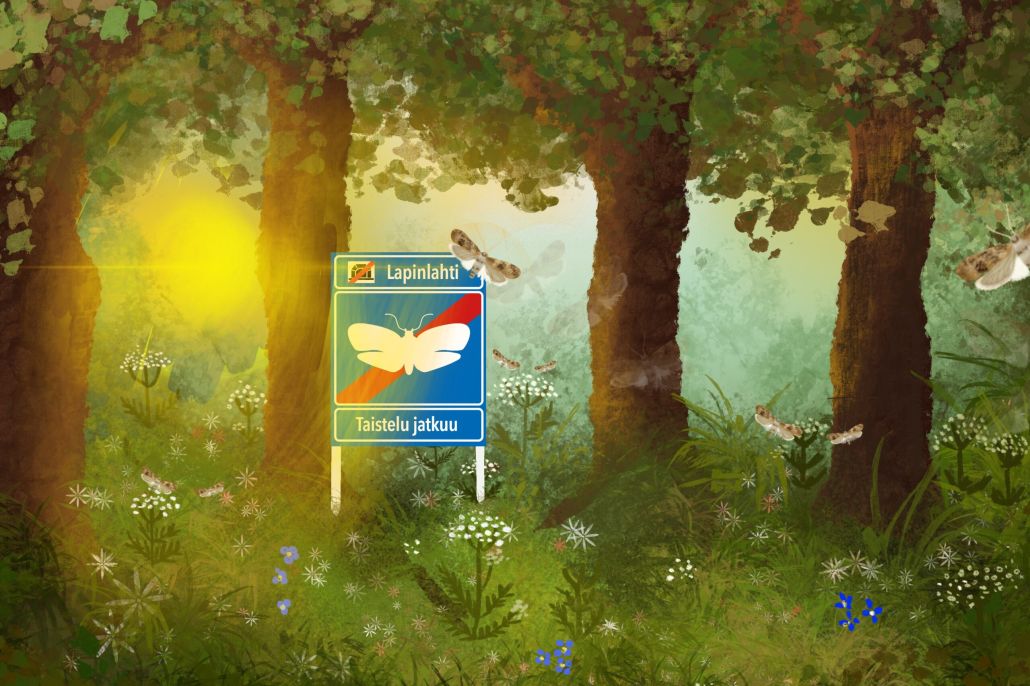Citizens are urging authorities to act to Kirvelilattakoi moth

Helsingin luonnonsuojeluyhdistys and Pro Lapinlahti mielenterveysseura ry, have formally requested that the regional environmental authority (ELY Centre) take urgent action to protect one of Finland’s rarest insects: the kirvelilattakoi (Depressaria chaerophylli).
This tiny moth is not widely known, but what is at stake is significant because it has only three known habitats in the entire country.
Why is this tiny moth important?
The kirvelilattakoi, known in English as Streaked Flat-body or Tabby Brown, is classified as a critically endangered and enlisted as a specially protected species under Finland’s Nature Conservation Act. In practice, this means that the law gives it the highest level of protection available.
The only three known habitats are:
Of these three places Lapinlahti is the strongest and most viable population. If this habitat is harmed, the risk of the species disappearing from Finland entirely becomes very real.
What are the citizens demanding?
The organizations have initiated an official procedure that asks the ELY Centre to:
- Formally define and map the Lapinlahti habitat of the kirvelilattakoi, and
- Put into force a legal ban on damaging or degrading this habitat.
Under the Nature Conservation Act, once a habitat is officially designated as essential for a specially protected species, it becomes illegal to destroy or weaken it. This is a core mechanism for protecting endangered species in Finland.
Why this is urgent?
The planned Satamatunneli (Harbour Tunnel) project proposed route and structures would cut directly through or near the moth’s key habitat in Lapinlahti. According to ecological assessments referenced in the filing, a very big part of the known habitat could be harmed or destroyed.
The organizations argue that:
- Without an official protection decision, the species most important habitat is at high risk.
- Allowing such harm would contradict the Nature Conservation Act’s goal of preserving biodiversity.
- Finland has the obligation under both national and EU environmental law, of preventing the decline of critically endangered species.
Legal Basis for the Request
The filing references several key points of law:
- Nature Conservation Act §77: Allows authorities to define areas essential for endangered species and prohibits their destruction once mapped.
- Nature Conservation Act §128: Gives citizens and environmental organizations the right to trigger official action when nature is at serious risk.
- Precautionary principle (§7): Requires authorities to prevent biodiversity loss even when scientific certainty is not absolute.
The organizations argue that when a species has only three national populations, all of them are inherently “essential for the species’ survival”, and protecting them is legally and ethically necessary.
What Happens Next?
Because the filing is made under a special urgency provision, the ELY Centre must review the case quickly. It must determine whether the Lapinlahti area qualifies as a habitat essential for the species, and if so, it is expected to issue a formal protection decision.
Such a decision could significantly influence the future of the Harbour Tunnel project and local land use planning.
Why this case matters beyond one species
This is more than a debate about a single moth. It raises broader questions that need to be adresed and considered
- How seriously does Finland take biodiversity protection when it conflicts with major infrastructure projects?
- Are legal protections for endangered species applied consistently in practice?
- What responsibility do authorities have when citizens present credible evidence of ecological risk?
The outcome of this case will set an important precedent for how Finland interprets and enforces the new Nature Conservation Act, especially in urban environments where nature is as important as progress.